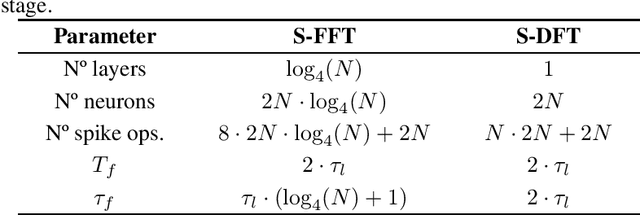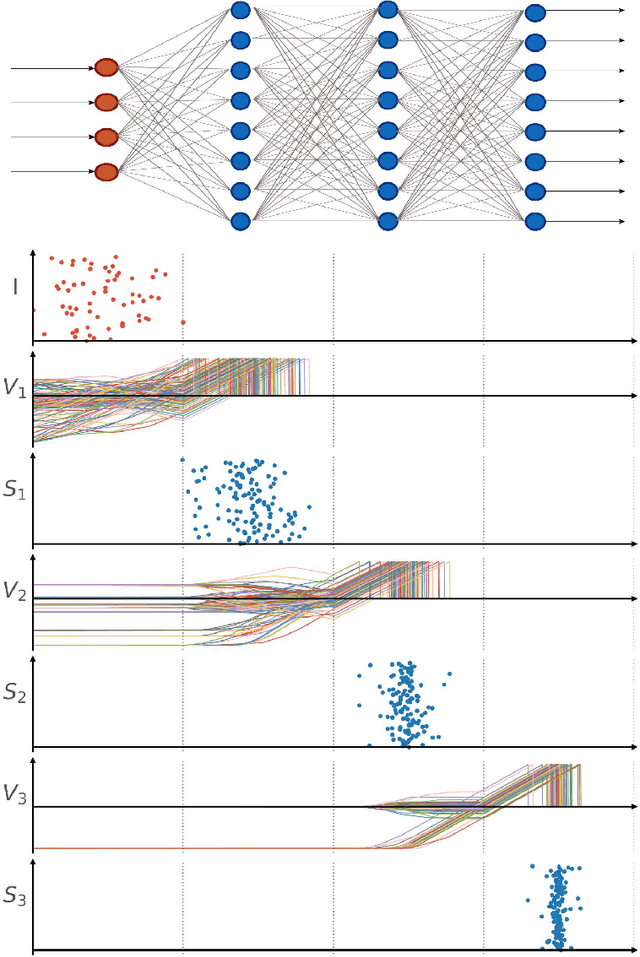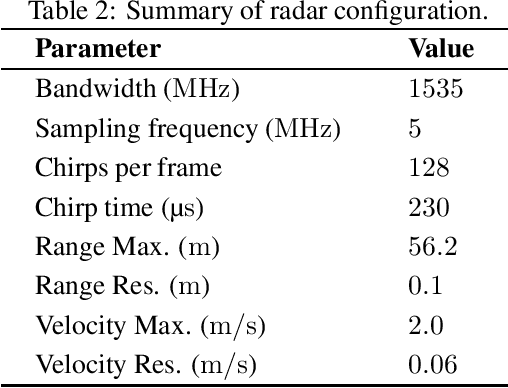Nico Reeb
Integrate-and-fire circuit for converting analog signals to spikes using phase encoding
Oct 03, 2023Abstract:Processing sensor data with spiking neural networks on digital neuromorphic chips requires converting continuous analog signals into spike pulses. Two strategies are promising for achieving low energy consumption and fast processing speeds in end-to-end neuromorphic applications. First, to directly encode analog signals to spikes to bypass the need for an analog-to-digital converter (ADC). Second, to use temporal encoding techniques to maximize the spike sparsity, which is a crucial parameter for fast and efficient neuromorphic processing. In this work, we propose an adaptive control of the refractory period of the leaky integrate-and-fire (LIF) neuron model for encoding continuous analog signals into a train of time-coded spikes. The LIF-based encoder generates phase-encoded spikes that are compatible with digital hardware. We implemented the neuron model on a physical circuit and tested it with different electric signals. A digital neuromorphic chip processed the generated spike trains and computed the signal's frequency spectrum using a spiking version of the Fourier transform. We tested the prototype circuit on electric signals up to 1 KHz. Thus, we provide an end-to-end neuromorphic application that generates the frequency spectrum of an electric signal without the need for an ADC or a digital signal processing algorithm.
* 13 pages
Time-coded Spiking Fourier Transform in Neuromorphic Hardware
Mar 31, 2022



Abstract:After several decades of continuously optimizing computing systems, the Moore's law is reaching itsend. However, there is an increasing demand for fast and efficient processing systems that can handlelarge streams of data while decreasing system footprints. Neuromorphic computing answers thisneed by creating decentralized architectures that communicate with binary events over time. Despiteits rapid growth in the last few years, novel algorithms are needed that can leverage the potential ofthis emerging computing paradigm and can stimulate the design of advanced neuromorphic chips.In this work, we propose a time-based spiking neural network that is mathematically equivalent tothe Fourier transform. We implemented the network in the neuromorphic chip Loihi and conductedexperiments on five different real scenarios with an automotive frequency modulated continuouswave radar. Experimental results validate the algorithm, and we hope they prompt the design of adhoc neuromorphic chips that can improve the efficiency of state-of-the-art digital signal processorsand encourage research on neuromorphic computing for signal processing.
 Add to Chrome
Add to Chrome Add to Firefox
Add to Firefox Add to Edge
Add to Edge